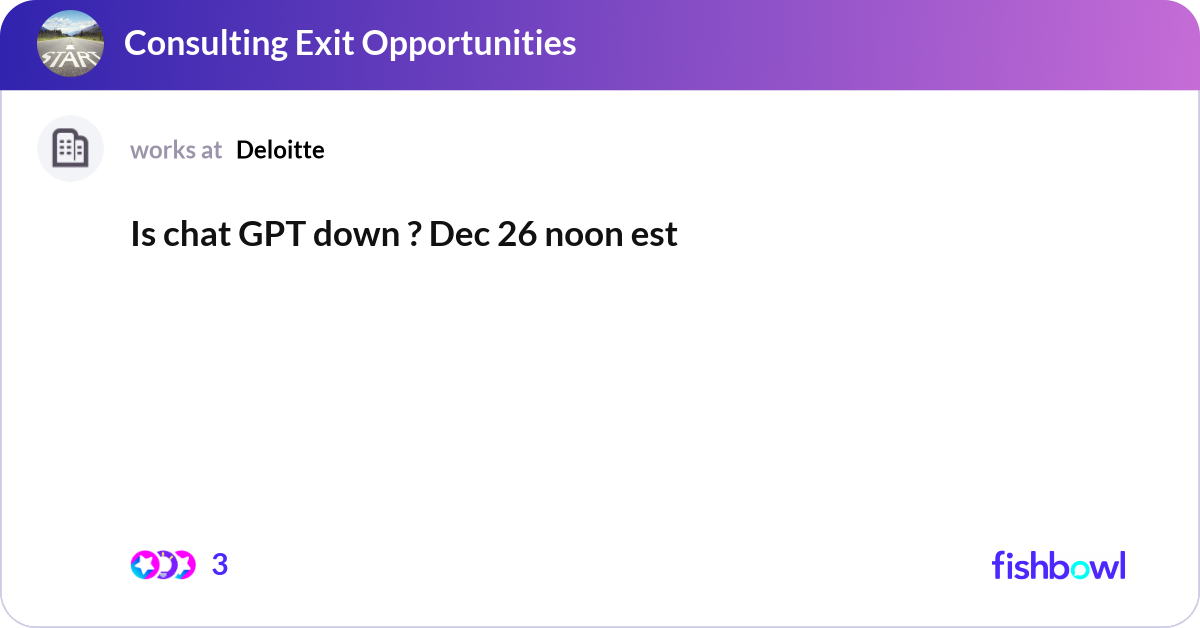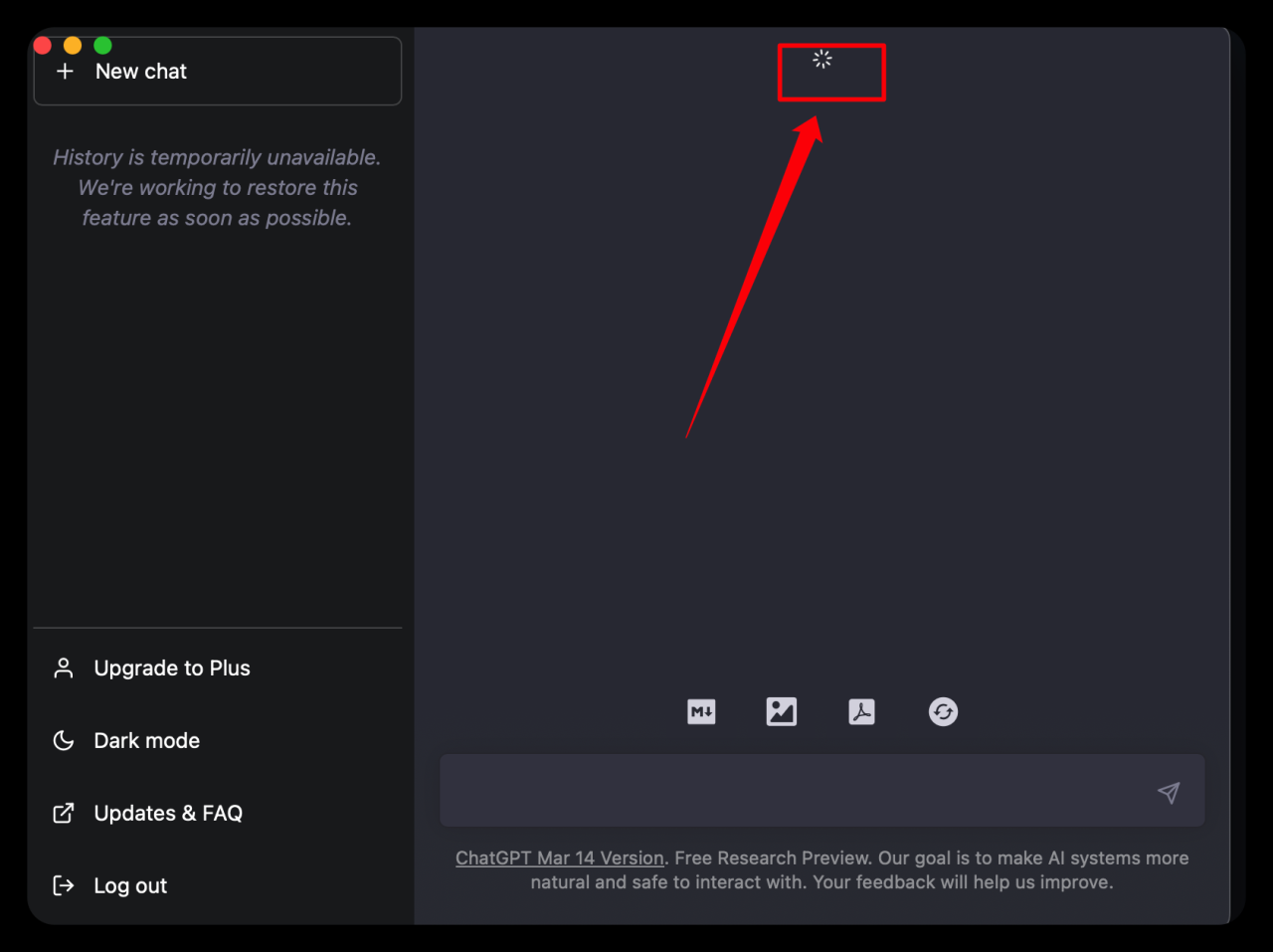Chatgpt down? – Kami Down? It’s a frustrating experience when a relied-upon service suddenly goes offline. This guide explores the common causes of service interruptions, offering practical troubleshooting steps and strategies for staying informed during downtime. We’ll cover everything from identifying if the problem is widespread or isolated to exploring alternative solutions and preventative measures to minimize future disruptions. Get ready to navigate the world of service outages like a pro!
We’ll examine the various reasons why services might become unavailable, from planned maintenance to unexpected technical glitches. We’ll also look at how long these outages typically last and what steps users can take to minimize the impact on their workflow. The guide also delves into effective communication strategies for service providers, highlighting how they can keep users informed and manage expectations during a disruption.
Understanding these processes will help both users and providers navigate these inevitable interruptions smoothly.
Kami Service Interruptions
Service interruptions, while frustrating, are an unavoidable reality for any online service. Understanding the causes, impacts, and mitigation strategies surrounding these events is crucial for both service providers and users. This section details the various aspects of Kami service outages, providing insights into potential causes, typical durations, and strategies for managing these disruptions.
ChatGPT down? It’s frustrating when AI tools go offline, but hey, sometimes real-world events are even weirder. Check out this link for info on drone sightings around the world ; it might make you forget all about ChatGPT being down for a bit. Seriously, the unexplained drone activity is pretty wild. So, back to ChatGPT – hopefully, it’ll be back up soon!
Service Interruption Causes
Temporary service outages for platforms like Kami can stem from a variety of factors. These range from planned maintenance activities to unforeseen technical issues. High user traffic surges can overwhelm system capacity, leading to slowdowns or complete outages. Software bugs, hardware failures (server issues, network problems), and security incidents are other potential culprits. External factors like DDoS attacks or internet infrastructure problems can also contribute.
Typical Downtime Duration
The length of a Kami downtime event varies greatly depending on the cause and complexity of the issue. Minor glitches might be resolved within minutes, while major incidents involving significant system failures could take hours or even days to rectify. Past incidents have shown a wide range, from short, sub-hour outages to longer disruptions lasting several hours. The complexity of the problem and the speed of the response team directly affect the resolution time.
Examples of Past Incidents and Resolutions

While specific details of past Kami outages are often kept confidential for security reasons, publicly available information suggests that many outages have been attributed to unexpected spikes in user traffic, requiring scaling adjustments to infrastructure. Other instances may have involved software bugs that needed patching and deployment. Resolution typically involves identifying the root cause, implementing a fix, and rigorously testing before restoring service.
Post-incident analysis helps in preventing future recurrences.
Outage Types and Impact
| Outage Type | Duration | Cause | User Impact |
|---|---|---|---|
| Minor Glitch | Minutes | Software bug, temporary network hiccup | Brief interruption, minor inconvenience |
| Planned Maintenance | Hours | Scheduled system upgrades | Service unavailable during scheduled time |
| Major System Failure | Hours to Days | Hardware failure, major software bug | Extended service disruption, significant productivity loss |
| DDoS Attack | Variable | Malicious network attack | Service unavailability, potential data breach risk |
Identifying the Problem
Determining whether a service interruption affects only you or all users is the first step in troubleshooting. Several methods can be employed to verify the extent of the issue.
Verifying Service Availability
To check if the problem is widespread, try accessing Kami from different devices and networks. Searching social media platforms (Twitter, etc.) for mentions of “Kami down” can quickly confirm if others are experiencing the same issue. Official Kami status pages, if available, provide the most reliable information.
Common Troubleshooting Steps
- Check your internet connection: Ensure you have a stable internet connection.
- Restart your device: A simple restart can often resolve minor software glitches.
- Clear your browser cache and cookies: Accumulated data can sometimes interfere with website functionality.
- Try a different browser: Using a different browser can help identify browser-specific issues.
- Contact support: If the problem persists, contact Kami support for assistance.
User Resources During Downtime
During downtime, users can consult several resources to stay updated on the situation and find potential workarounds.
- Official Kami status page (if available)
- Social media channels (Twitter, etc.)
- Kami community forums or help centers
Troubleshooting Connection Problems Flowchart

A flowchart would visually represent the troubleshooting steps, starting with checking internet connection, moving to device restart, then browser cache clearing, and finally contacting support if the problem persists.
Impact on Users
The consequences of Kami unavailability differ depending on user groups and the duration of the outage. The impact extends beyond mere inconvenience, affecting productivity and workflows.
ChatGPT down? Before panicking, make sure your internet’s working! A weak connection can cause all sorts of problems. One quick check is to see if you’re on the right frequency band; find out by checking how to check your wifi ghz on iphone. If it’s 2.4GHz and congested, try switching to 5GHz if available. Still having trouble with ChatGPT?
Try restarting your router or checking for outages.
Consequences of Service Unavailability
For students and researchers, a Kami outage can disrupt access to research materials and tools. Businesses relying on Kami for customer service or internal communication face productivity losses and potential reputational damage. Developers integrating Kami into their applications experience project delays and frustrated users. The longer the outage, the more severe the consequences become.
Impact on Productivity and Workflow
Short-term outages cause minor disruptions, leading to temporary delays and minor workflow adjustments. Prolonged outages, however, can significantly impact productivity, leading to project delays, missed deadlines, and increased frustration. The reliance on Kami for specific tasks directly influences the magnitude of the impact.
Short-Term vs. Prolonged Outages
Short-term outages usually result in minor inconveniences and temporary workflow adjustments. Prolonged outages, on the other hand, can cause significant productivity losses, missed deadlines, and frustration among users. The difference in impact is directly proportional to the duration of the outage.
User Experiences During Previous Downtime
Anecdotal evidence from past incidents suggests a range of user experiences, from minor frustration to significant disruption of workflows. Users have reported delays in projects, inability to complete tasks, and increased stress levels during extended outages. The severity of the impact is often directly related to the user’s dependence on the service.
Communication Strategies: Chatgpt Down?
Effective communication is crucial during service disruptions. Proactive and transparent communication helps manage user expectations and mitigate negative impacts.
Effective Communication Strategies
A well-defined communication plan should include multiple channels (social media, email, website updates) to reach all user groups. Regular updates on the status of the outage, estimated restoration time, and workarounds are essential. Honest and transparent communication builds trust and reduces anxiety.
Sample Social Media Post
“We are aware of an ongoing service interruption affecting Kami. Our team is working diligently to restore service as quickly as possible. We will provide updates every 30 minutes. #Kami #ServiceOutage”
Best Practices for Keeping Users Informed
- Provide regular updates on the situation.
- Be transparent about the cause of the outage (if possible).
- Offer estimated restoration times (with caveats).
- Provide workarounds or alternative solutions.
- Monitor user feedback and address concerns promptly.
Notification System for Service Restoration
A robust notification system could use email, SMS, or in-app notifications to alert users when service is restored. This ensures users are informed immediately and can resume their work without delay.
Preventive Measures
Proactive measures significantly reduce the frequency and severity of service interruptions. Investing in robust infrastructure, implementing thorough testing procedures, and establishing effective monitoring systems are crucial.
Potential Vulnerabilities
- Hardware failures
- Software bugs
- Network vulnerabilities
- DDoS attacks
- Insufficient capacity
Enhancing Service Reliability, Chatgpt down?

Strategies include load balancing, redundancy (backup systems), automated failover mechanisms, and regular system backups. Investing in robust infrastructure, implementing comprehensive monitoring, and employing rigorous testing are essential steps.
Proactive Measures to Mitigate Future Outages
- Regular system backups
- Automated failover mechanisms
- Load balancing across multiple servers
- Stress testing and capacity planning
- Security audits and penetration testing
Best Practices for Preventing Service Interruptions
- Regular maintenance and updates
- Robust monitoring and alerting systems
- Disaster recovery planning
- Security best practices
- Capacity planning and scaling
Alternative Solutions
During downtime, alternative solutions can help users maintain some level of functionality. However, these alternatives may have limitations and may not fully replicate the capabilities of Kami.
Alternative Methods for Accessing Similar Functionalities
Depending on the user’s needs, alternatives could include using different language models, relying on manual processes, or utilizing offline resources. The effectiveness of each alternative depends on the specific task and the user’s context.
Potential Workarounds
- Using other AI writing tools
- Employing traditional research methods
- Collaborating with colleagues for task completion
Effectiveness of Different Alternative Solutions
The effectiveness varies greatly depending on the specific task and the user’s needs. Some alternatives may provide partial functionality, while others may be completely unsuitable.
Limitations of Alternative Solutions
Alternatives often lack the speed, efficiency, and capabilities of Kami. They might require more time, effort, and resources, and may not provide the same level of accuracy or quality.
Visual Representation of Downtime
A visual representation of a typical downtime event might show a graph with time on the x-axis and key metrics (user count, error rate, and recovery time) on the y-axis. The graph would illustrate the stages of the outage: initial decline in user activity, a period of complete service unavailability, and finally, the gradual recovery of service and user activity.
Detailed Graph Description
The graph would show a sharp drop in user count at the onset of the outage, followed by a plateau representing the period of complete unavailability. The error rate would spike during the outage, then decrease as service is restored. The recovery time would be represented by the time it takes for the user count and error rate to return to pre-outage levels.
A clear correlation between user activity and service availability would be evident.
Ultimate Conclusion
Facing service downtime can be disruptive, but understanding the potential causes, troubleshooting steps, and proactive measures significantly reduces its impact. By staying informed, utilizing available resources, and adopting effective communication strategies, both service providers and users can navigate these interruptions efficiently and minimize disruptions to productivity and workflow. Remember, preparation and proactive measures are key to minimizing the inconvenience of future outages.
Expert Answers
What should I do if I suspect a service outage?
First, check the service provider’s social media or website for announcements. Then, try restarting your device and checking your internet connection. If the problem persists, contact support.
How long do service outages typically last?
It varies greatly, from a few minutes for minor issues to hours or even days for major incidents. Service providers usually provide estimated restoration times when possible.
Are there any alternative services I can use during downtime?
Depending on the service, there might be alternative tools or platforms offering similar functionalities. Check for community forums or the service provider’s website for suggestions.
ChatGPT down? Bummer! While you wait for it to come back online, maybe check out some other exciting tech developments, like the potential investment opportunities in drone delivery Canada stock. It’s a rapidly growing sector, so it might be a good distraction from that frustrating ChatGPT outage. Hopefully, ChatGPT will be back up soon!
How can I stay informed about service disruptions?
Follow the service provider on social media, subscribe to email alerts, or check their status page regularly.
